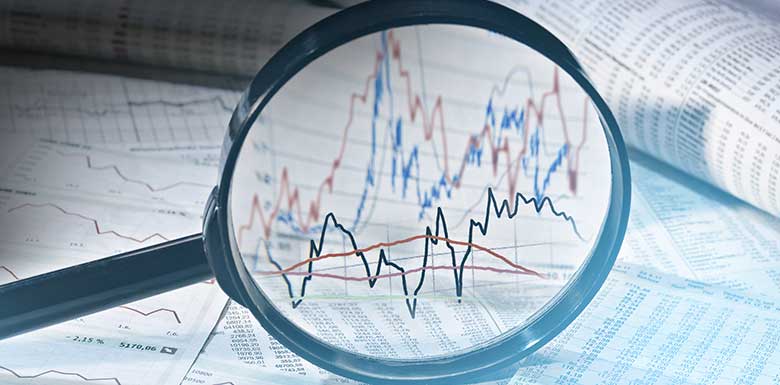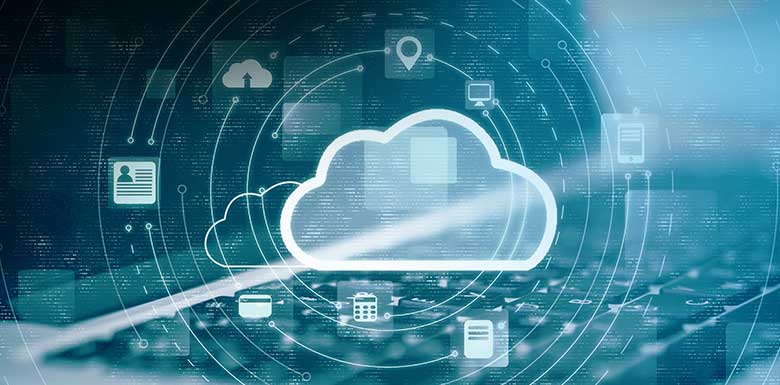Augmented analytics for a successful data-based future
What is Augmented Analytics?
Would you like to know what method you can use to find out what will happen in the future, how your KPIs will develop, and how you can recognize lucrative business opportunities?
With SAP Augmented Analytics, you’re doing more than just increasing revenue, quality, customer satisfaction and customer loyalty; you’re also achieving cost savings, identifying trends and reducing entrepreneurial risk.
The analytics software forms part of the SAP cloud platform SAP Analytics Cloud (SAC) and uses SAP HANA, the powerful in-memory database. SAP HANA enables real-time access to all of the operational applications’ and business processes’ data (on-prem too), not to mention its immediate further processing and evaluation directly in the browser.
Within SAP Analytics Cloud, the area covering augmented analytics uses Artificial Intelligence (AI), Machine Learning (ML) and statistical algorithms to simplify data analyses. So they can be performed automatically, without requiring the expertise of a data scientist, directly in the respective specialist departments.
Natural Language Processing (NLP) even allows users to interact with the software in natural language.
With augmented analytics, you can use historical data to forecast the probability of future results in SAP Analytics Cloud (SAC). SAP Augmented Analytics allows you to, for example, calculate your machines’ probabilities of failure, improve your cybersecurity, predict customer responses or purchasing behavior or check a person’s creditworthiness.
SAP Augmented Analytics uses advanced machine learning techniques such as predictive models and statistical analyses to interpret business data and gain valuable insights. Even without the help of a data scientist or the specialists from the Business Intelligence (BI) team, decision-makers are guaranteed deeper insights. Bottlenecks in data processing are minimized by automating the modelling and scoring of data records. This enables more efficient support in decision-making by integrating both structured and unstructured data. By applying business rules and using extensive data records, SAP Augmented Analytics gives companies a competitive edge.
Augmented analytics is used within SAP Analytics Cloud to solve complex problems and discover new opportunities. This is done by integrating various forms of analytics, including:
- „descriptive analytics“ (i.e. describing the current situation based on historical data);
- „predictive analytics“ (i.e. forecasting future developments); and
- the use of prescriptive methods with specific AI-supported recommendations for action that optimize decision-making.
Composition of augmented analytics: predictive and prescriptive analytics, including what sets them apart, using an example
Augmented analytics is made up of the areas predictive analytics and prescriptive analytics. While predictive analytics attempts to predict future events („What might happen?“), prescriptive analytics makes recommendations for action to achieve or prevent predicted events. That way, you achieve the best possible result for your company and minimize your risks.
Allow us to explain what we mean using an example:
Example | Predictive analytics | Prescriptive analytics |
Question | What is likely to happen? | What should we do? |
Scenario | A retailer would like to know which products will be sold most frequently in the coming months. | The same retailer would like to know how to optimize its stock levels and marketing efforts to make the most of the expected increase in demand for summer clothing. |
Description | Predictive analytics analyzes historical data to predict future events or trends. The retailer could use data such as past sales figures, seasonal trends, marketing campaigns and demographic information. This data can be used to create a forecasting model that predicts which products will be in particularly high demand in the near future. | Prescriptive analytics goes one step further and offers specific recommendations for action. Based on the predictions that predictive analytics makes and taking into account additional restrictions and targets (e.g. budget, storage capacity, delivery times), prescriptive analytics calculates the best course of action. |
Result | The model shows that demand for summer clothing is expected to increase in the next three months. | The model recommends increasing stock levels of summer clothing by 20% and launching a targeted marketing campaign offering discounts on summer clothing. It also suggests contacting additional suppliers to avoid bottlenecks and stepping up certain advertising measures on social media. |
In a nutshell:
- Predictive analytics: Predicts what will happen, for example: „Demand for summer clothing will be high over the next three months.“
- Prescriptive analytics: Gives recommendations for action based on the predictions, for example: „Increase stock levels of summer clothing, launch a marketing campaign and contact additional suppliers.“
Both methods are important and complement one another to help companies not only anticipate future developments, but also take the best course of action to respond to these developments.
How augmented analytics improves your business intelligence (BI) processes:
Data expertise
Companies have been collecting huge amounts of data for years. But only AI analysts have been able to take advantage of this data – until now. However, it is advantageous if end users without special technical expertise such as programming or knowledge of machine learning and deep learning, or operating in the field of forecast model development and evaluation, can also use data to optimize their everyday work. Within SAP Analytics Cloud, users are able to use natural language to interact with the BI platform to uncover new insights and easily visualize them using dashboards.
Task automation
AI technologies help employees to gain new insights faster by automating repetitive data preparation, analysis, and visualization tasks. Machine learning helps with cleansing and preparing data. What’s more, patterns and correlations are automatically recognized (clustering), and suggestions for additional insights are made and subsequently visualized in an ad-hoc manner.
Contextual suggestions
Using the contextual question as a basis, the analytics software recognizes the intention behind the question that the user asks and automatically uncovers further hidden details in the data.
Conversational analytics
Interaction with a chatbot enables even inexperienced users to manage large amounts of data. Simply ask a question in natural language. You’ll receive answers and be shown related data fields or suggestions for further questions in real time. Additionally, your questions and answers are visualized using charts or graphs.
AI tools for smarter decisions
SAP Augmented Analytics helps users to make smarter decisions faster with AI-driven tools. These smart functions (as shown in the graphic) include the Just Ask chatbot and the Time Series Forecasting, Classification and Regression forecasting models from the Smart Predict toolset. The graphical illustration of certain facts with R visualizations can also be assigned to this area. Note: The Search to Insight, Smart Insight, Smart Discovery and Smart Grouping functions are still available in their current form (as at September 2024), but have already been discontinued by SAP. They will probably disappear from SAC in the course of future releases.
Just Ask
Just Ask is a voice assistant (chatbot) that is integrated into SAP Analytics Cloud (SAC) and enables you to make queries using natural language (NLQ). It searches the data of released data models after a question has been entered and returns the result in the form of a table or graphic.
R Visualizations
Enhance your SAP Analytics Cloud story with custom visualizations using your own R scripts.
Smart Predict
Within SAP Analytics Cloud, you can use Smart Predict to forecast the probability of future results based on historical data. Artificial intelligence (AI), machine learning and statistical algorithms play a crucial role in this respect.
Regression
Regression is used to estimate the value of a quantifiable key performance indicator without any need for a time reference. It analyzes historical data to predict the value of the target variable for a new entity based on the values of other variables and answers questions such as customer payment behavior, future product purchases or average spending in the online shop.
Classification
Classification involves estimating the probability of a future event based on past data to create a forecasting model. This model can then predict binary events (yes/no or true/false), such as:
- Staff turnover (employees leaving the company)
- Customer responses to advertising campaigns (customers responding positively to possible campaigns)
- Possible machine breakdowns (there will be a machine breakdown within a week)
- Or spam detection (the email is a spam email).
Time Series Forecasting
Time Series Forecasting uses historical values of a measured variable to predict its future values, whereby the target variable always has a time reference. The past values are broken down into their components such as trend, cycles, influencing factors and fluctuation, so as to answer questions regarding how the likes of sales figures, cash flow and inventories will develop in the future.
Additional sample applications for predictive analytics
Predictive analytics tools are used to solve complex problems and discover new opportunities with the help of business intelligence (BI). Historical data and data sets are used to make accurate predictions.
Cross-selling and up-selling
With SAP Predictive Analytics, you can predict buying behavior or customer responses. What’s more, predictive models help not only with retaining the most profitable customers in the long run, but also with discovering new cross-selling and up-selling opportunities and methods. By using historical data and predictive analytics, precise forecast models can be created for purchasing behavior or customer responses.
Fraud detection
This analysis method improves pattern recognition and can prevent criminal behavior. As cybersecurity becomes more important with increasing digitalization, a powerful analytics solution examines all the actions on a network in real time. This allows you to detect anomalies that indicate fraud, zero-day vulnerabilities or other threats. SAP Predictive Analytics therefore plays a crucial role in predicting and preventing fraud.
Risk reduction
Banks use what are known as “credit scores” to assess the probability of borrowers paying back their loans. A credit score is a value calculated using algorithms. All the data relevant to a person’s creditworthiness is included. By analyzing this data and applying predictive analytics, you can get an accurate assessment of creditworthiness.
Operational optimizations
Predictive analytics makes companies more efficient by predicting utilization or stock levels, resulting in a rise in revenue. For example, airlines forecast the number of seats still available and adjust ticket prices accordingly.
Even large volumes of data (Big Data) can be evaluated quickly and easily by combining HANA and Predictive Analytics.
With SAP Augmented Analytics, you’re providing your business analysts, data scientists and especially users in the business departments with an effective tool for fast and automated insights. What’s more, various visualizations offer the opportunity of making the newly acquired knowledge available to colleagues in an illustrative way. Predictive analytics enables forecasting of future trends (predictions) based on historical data. What’s more, various visualizations offer the opportunity of making the newly acquired knowledge available to colleagues in an illustrative way.
SAC relieves the strain on your IT department and cuts operating costs
As is the case with all SaaS solutions, you don’t need your own hardware to use SAP Analytics Cloud (SAC). What’s more, there’s no need for installation and configuration with a cloud solution. The automatic updates mean you’re always working with the latest version and also relieving the strain on your IT department.
The benefits of SAP Augmented Analytics for a successful data-based future in the company:
- The ability to create complex forecasts without the support of data scientists or analytics experts / business analysts is now available to normal end users too as a kind of self-service.
- SAP Predictive Analytics reduces the staff resources and time required to analyze large volumes of data.
- Patterns, trends and dependencies are uncovered in real time through machine learning and artificial intelligence – even in the largest volumes of data.
- Using historical data as a basis, intelligent algorithms determine reliable predictions and learn independently to further optimize the results.
- Even complex insights are visually presented in dashboards in a way that is easy to understand.
- Natural language processing (NLP) also allows you to interact with the software in natural language.
- Real-time analyses can be performed at any time on a browser from any terminal device.

With the new ERP system S/4HANA, SAP offers the next step towards a modern, integrated platform for the constantly growing requirements of a state-of-the-art IT system.

Transform company data from different sources into relevant information
The increasing flood of information, the demand for ever shorter reaction times and the increasing responsibility in the operative business increase the demands on a modern reporting system.

The SAP Cloud solution for business analytics allows you to use a modern platform if you need to present your data in a modern and comprehensible way.



















